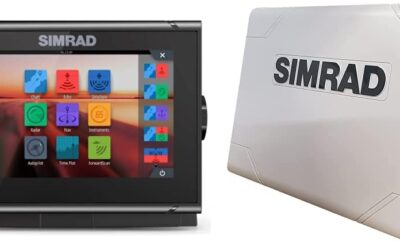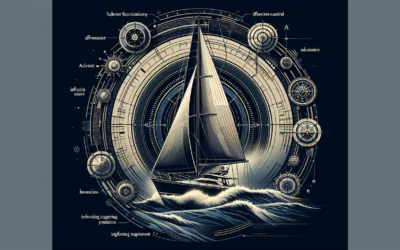Navigating the complex world of beam angles might seem like a daunting task, but don’t worry, you’ve come to the right place to understand it all. The article ahead presents a straightforward comparison of narrow and wide beam angles and explains their multifarious uses across diverse industries. From shedding light on their definitions to discussing the benefits and detriments of each type, it leaves no stone unturned in giving you a robust understanding of this captivating subject. So, buckle up and get ready to enlighten your knowledge about the diverse world of beam angles.
Understanding Beam Angles
The concept of beam angles plays a vital role in how light is projected and perceived in various spaces. Understanding this concept will not only enable you to make informed decisions about lighting choices but also ensure their effective utilization. Here, we embark on our journey to delve into the world of beam angles.
Definition of Beam Angles
Beam angle refers to the angle over which a light source distributes its luminance. It is measured in degrees and denotes the spread of light from the fixture. It is defined as the angle between those points on opposite sides of the beam axis, where the intensity drops to 50% of the maximum.
Importance of Beam Angles in Lighting
Why are beam angles so integral to the lighting decision-making process, you might wonder? Well, different situations call for different beam angles. Choosing the right beam angle can make a huge difference in how well a space is lit, whether you’re highlighting a room’s architectural features, setting up task lighting, or creating mood lighting. Hence, it’s clear that beam angles play a pivotal role in optimizing and tailoring lighting solutions to cater to a broad array of lighting requirements.
How Beam Angles are Measured
Beam angles are measured using specialized equipment that can detect and plot the intensity of light. Essentially, it is the angle where the intensity of light drops to 50% of the maximum on a beam axis. The measurement provides a comprehensive view of a light source’s dispersion and helps in deciding the best fit for various lighting applications.
Characteristics of Narrow Beam Angles
As we step into the specifics of beam angles, we first explore the characteristics of narrow beam angles.
Definition of Narrow Beam Angles
Narrow beam angles, as the term suggests, have a concentrated and focused light beam spread. Their spread is typically less than 25 degrees, providing intense lighting within a minimal area.
Typical Measurements of Narrow Beam Angles
Narrow beam angles usually range between 10 to 25 degrees, providing a tightly concentrated light. However, some extremely narrow beams, also known as spotlights, may have a beam angle as small as 10 degrees or even less.
Light Distribution of Narrow Beam Angles
The light from narrow beam angles is concentrated and intense, ideal for spotlighting purposes. This feature results in a smaller lit area but with higher intensity and brightness, mainly serving the purpose of highlighting or drawing attention to specific spots or areas.
Uses of Narrow Beam Angles
Narrow beam angles are incredibly versatile and have a host of applications. Here are some of the most common uses.
Narrow Beam Angles in Spotlighting
Owing to their concentrated light, narrow beam angles are perfect for spotlighting. Whether it’s a stage performance, a piece of art, or a shop window, narrow beam angles are widely used to highlight and draw attention.
Use of Narrow Beams in Landscape Lighting
In landscape lighting, narrow beams serve as an excellent tool to showcase specific features. They are perfect for highlighting statues, stepping stones, garden ornaments, and even trees, adding depth and dimension to your exterior spaces.
Significance of Narrow Beams in Architectural Lighting
Architectural lighting thrives on strategically highlighting features. With narrow beam angles, you can create a stunning visual impact by focusing light on certain elements, like textured walls, archways, columns, or any other architectural feature you wish to accentuate.
Advantages and Disadvantages of Narrow Beam Angles
Like anything else, narrow beam angles have their pros and cons. Let’s explore those.
Energy Efficiency of Narrow Beams
Narrow beams are very efficient in terms of energy usage as they focus on a small area, reducing the need for multiple fixtures. This concentrated form of lighting tends to be more cost-effective in the long run.
Limitations of Narrow Beams
Despite being energy-efficient, the limitation of narrow beams lies in their coverage area. Due to their concentrated light, they illuminate a smaller area, which might not be ideal for general or task lighting.
Ideal situations for using Narrow Beams
Narrow beams are ideal when you need focused illumination for highlighting objects or specific areas. Whether it’s a retail showcase, art spotlighting, or architectural illumination, narrow beams excel in precise, targeted lighting.
Characteristics of Wide Beam Angles
Now that we have understood narrow beam angles, let’s shift our focus to wide beam angles.
Definition of Wide Beam Angles
Wide beam angles are those with a spread of more than 25 degrees. They distribute light over a wider area, providing broad, less intense illumination.
Typical Measurements of Wide Beam Angles
Wide beam angles typically range from 40 degrees to 120 degrees. The most commonly used ones are 60 degrees and 90 degrees, as they offer a good coverage area without losing too much intensity.
Light Distribution of Wide Beam Angles
Wide beam angles distribute light over a larger area, making them perfect for situations where general lighting is required. The light distribution is not as intense as narrow beams but is evenly spread, providing comfortable, ambient lighting.
Uses of Wide Beam Angles
Wide beam angles come with their own set of applications. Let’s look at a few.
Use of Wide Beams in General Lighting
Wide beams are ideal for general or ambient lighting. They illuminate a larger area evenly, making them perfect for lighting up living rooms, kitchens, offices, or any other space that requires widespread illumination.
Wide Beams for Workspace Lighting
Workspaces require uniform, comfortable, and bright lighting. This is where wide beam angles shine. Their broad light distribution ensures every part of your workspace is well-lit, enhancing productivity, and reducing eye strain.
Significance of Wide Beams in Mood Lighting
Wide beam angles are also excellent for mood lighting, creating a cozy and welcoming atmosphere. Whether it’s a romantic dinner setup or a relaxed lounge, wide beams can set the perfect mood with their expansive, soft light.
Advantages and Disadvantages of Wide Beam Angles
Wide beam angles, much like narrow beams, have their strengths and weaknesses. Here’s a look at some of those.
Light Coverage of Wide Beams
One of the standout advantages of wide beams is their expansive light coverage. They illuminate a larger area, making them ideal for general lighting. They also soften shadows and reduce high contrast, thus enhancing visual comfort.
Potential Drawbacks of Wide Beams
The disadvantages of wide beams come from the same feature that makes them advantageous—their broad coverage. In terms of energy efficiency, they may require more power to cover the same area as to what a narrow beam can cover but, more intensely.
Ideal Scenarios for using Wide Beams
Wide beams are best suited for situations requiring uniform, high-quality general lighting. Be it a living room needing even illumination, a workspace demanding excellent light quality, or a lounge area where you want to create a specific mood, wide beams can be your go-to choice.
Comparison between Narrow and Wide Beam Angles
Having learned about both narrow and wide beam angles, let’s compare the two.
Comparison in Terms of Light Intensity
Narrow beam angles are known for their high intensity and bright light, perfect for spotlighting or accent lighting. Wide beam angles, on the other hand, provide softer, more ambient light and are excellent for general and mood lighting.
Comparison in Light Distribution
In terms of distribution, narrow beams deliver focused, concentrated light, whereas wide beams offer broader and more uniform light spread.
Comparison in Energy Consumption
Despite illuminating a smaller area, narrow beams are more energy-efficient because they focus all their light on a specific spot. Wide beams need more energy for the same amount of light, as they spread it over a larger area.
Choice of Beam Angles based on Specific Needs
The choice between narrow and wide beams should ultimately be based on your specific needs and how you want to use the light.
Determining the Right Beam Angle for Specific Lighting Needs
If you need targeted illumination to highlight specific features or objects, go for a narrow beam. For general, even lighting across a large area, a wide beam would be the ideal choice.
Considerations When Choosing Between Narrow and Wide Beams
Consider factors such as the purpose of lighting, the size, and shape of the space, the distance between the light source and the area to be lit, and of course, energy efficiency. You might also need to consider the fixture type and its ability to support different beam angles.
Case Studies of Narrow and Wide Beam Angles
There’s no better way to understand the practical implications of beam angles than looking at a few real-world applications.
Real World Application of Narrow Beam Angles
Consider a high-end retail store that wants to highlight its premium products. Using narrow beam angles to spotlight these items would create a significant visual impact, draw customer’s attention, and potentially increase sales.
Real World Application of Wide Beam Angles
Take the example of an open-plan office, where uniform, comfortable lighting is necessary. Here, wide beam angles would ensure every workspace is well-lit, enhancing employee productivity without causing visual discomfort.
Comparative Analysis of the Output in Different Scenarios
In both the above scenarios, it’s clear that the choice of beam angle directly impacts the effectiveness of the lighting. While the retail store enhances product presentation through high-intensity, focused lighting, the office benefits from the broad, even light spread of wide beams.
In conclusion, understanding and choosing the right beam angle can greatly enhance the effectiveness of your lighting solutions. Whether you opt for a narrow beam angle for its focused illumination or a wide one for its extensive coverage, the key lies in aligning your choice with your specific lighting needs and scenarios.









